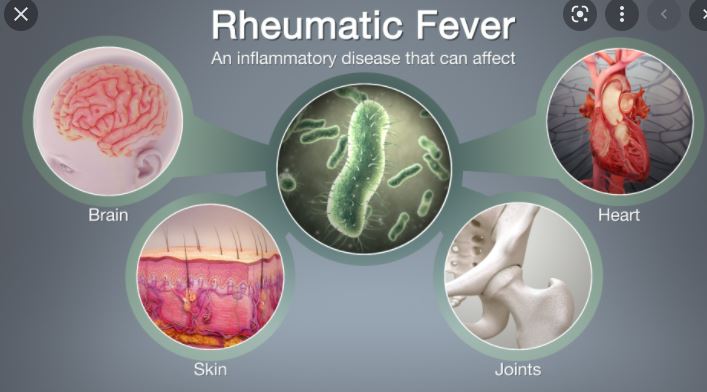Rheumatic fever is a complication of strep throat. When a throat infection that the streptococcus bacteria causes remain untreated, it can lead to rheumatic fever. It can become a life-threatening condition if not treated at the right time. Most commonly, it occurs in children between the age of 5 to 15. However, children older than that can also get it.
Rheumatic fever needs to be treated promptly. If left untreated, it can lead to various complications such as permanent damage to the heart, heart valves, and heart failure. The healthcare providers prescribe pain relievers to get rid of pain and long-term antibiotics to get rid of the infection. If your child has a complaint of recurrent throat infections, you should take them to the rheumatologist in Lahore, as it can be a sign of rheumatic fever.
What are the Signs and Symptoms of Rheumatic Fever?
The signs and symptoms of rheumatic fever may vary. They show up after two to four weeks of strep throat infection. The signs and symptoms of rheumatic fever are;
- small, painless nodules under the skin
- chest pain
- painful or sore joints in the wrists, elbows, knees, and ankles
- pain in one joint that moves to another joint
- red, hot, swollen joints
- shortness of breath
- fever
- sweating
- vomiting
- a flat, slightly raised, ragged rash
- jerky, uncontrollable movements of the hands, feet, and face
- a decrease in attention span
- outbursts of crying or inappropriate laughter
- rapid fluttering or pounding chest palpitations
- lethargy or fatigue
- nosebleeds
- stomach pain
The symptoms of rheumatic fever occur due to the inflammation of the joints, heart lining, skin, and central nervous system.
When Should You See a Doctor?
Not every time a sore throat indicates a strep infection. But if your child has the following complaints along with throat pain, you should take them to the doctor soon for a check-up.
- tender and swollen lymph nodes
- red rash
- difficulty swallowing
- thick, bloody discharge from nose
- small, red spots on the roof of the mouth
- headache
- nausea
- vomiting
- the temperature of 101°F (38.3°C) or above
- tonsils that are red and swollen
- tonsils with white patches or pus
What Causes Rheumatic Fever?
Group A Streptococcus bacterium causes strep throat infection, which in turn causes rheumatic fever. The bacterium also causes scarlet fever, in a small percentage of people.
Due to rheumatic fever, your body starts to damage its own tissues. The reaction is so widespread that it almost involves all vital organs, and therefore the symptoms are severe.
What are the Treatment Options for Rheumatic Fever?
The treatment for rheumatic fever aims to reduce pain and bacterial load. Therefore your healthcare provider will prescribe;
- over the counter pain relivers like paracetamol, ibuprofen
- corticosteroids to relieve inflammation
- antibiotics to get rid of the infection
- bed rest for some weeks to months if the rheumatic fever has damaged your heart
How Rheumatic Fever can be Prevented?
The sure way to prevent rheumatic fever is to treat strep throat. When your child has a throat infection, take them to the doctor and get their course of antibiotics completed. Make sure your child completes the course of drugs that the healthcare provider has prescribed. If they leave in between or do not take the right amount of dose, it can lead to antibiotic resistance, which makes it more difficult to treat.
Conclusion
Rheumatic fever occurs as a response to untreated strep throat. You should not take the symptoms of it lightly as it can lead to life-threatening complications. If your child has signs and symptoms of rheumatic fever, take them to the rheumatologist in Islamabad.

